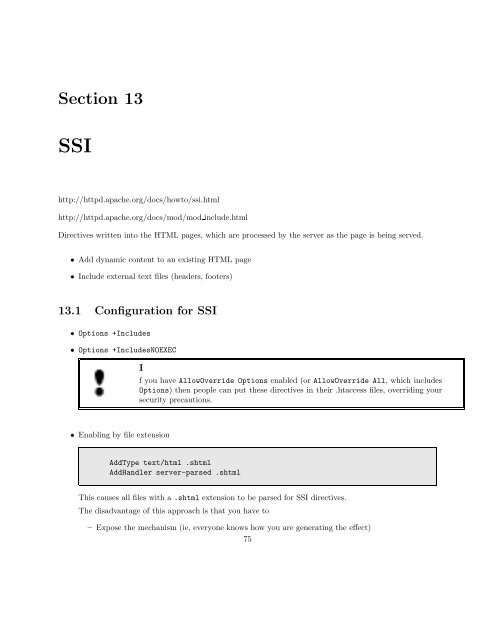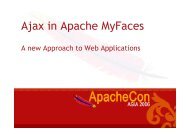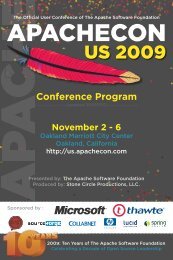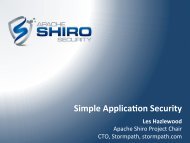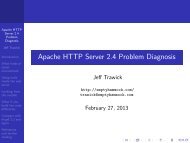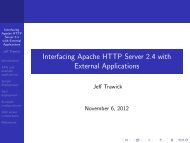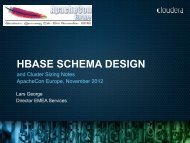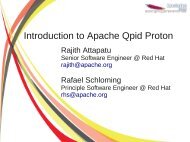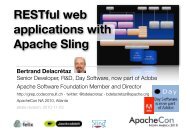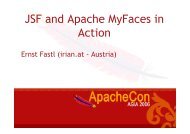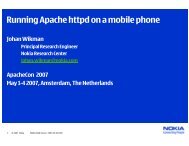Introduction to the Apache Web Server - ApacheCon
Introduction to the Apache Web Server - ApacheCon
Introduction to the Apache Web Server - ApacheCon
You also want an ePaper? Increase the reach of your titles
YUMPU automatically turns print PDFs into web optimized ePapers that Google loves.
Section 13<br />
SSI<br />
http://httpd.apache.org/docs/how<strong>to</strong>/ssi.html<br />
http://httpd.apache.org/docs/mod/mod include.html<br />
Directives written in<strong>to</strong> <strong>the</strong> HTML pages, which are processed by <strong>the</strong> server as <strong>the</strong> page is being served.<br />
• Add dynamic content <strong>to</strong> an existing HTML page<br />
• Include external text files (headers, footers)<br />
13.1 Configuration for SSI<br />
• Options +Includes<br />
• Options +IncludesNOEXEC<br />
I<br />
f you have AllowOverride Options enabled (or AllowOverride All, which includes<br />
Options) <strong>the</strong>n people can put <strong>the</strong>se directives in <strong>the</strong>ir .htaccess files, overriding your<br />
security precautions.<br />
• Enabling by file extension<br />
AddType text/html .shtml<br />
AddHandler server-parsed .shtml<br />
This causes all files with a .shtml extension <strong>to</strong> be parsed for SSI directives.<br />
The disadvantage of this approach is that you have <strong>to</strong><br />
– Expose <strong>the</strong> mechanism (ie, everyone knows how you are generating <strong>the</strong> effect)<br />
75


